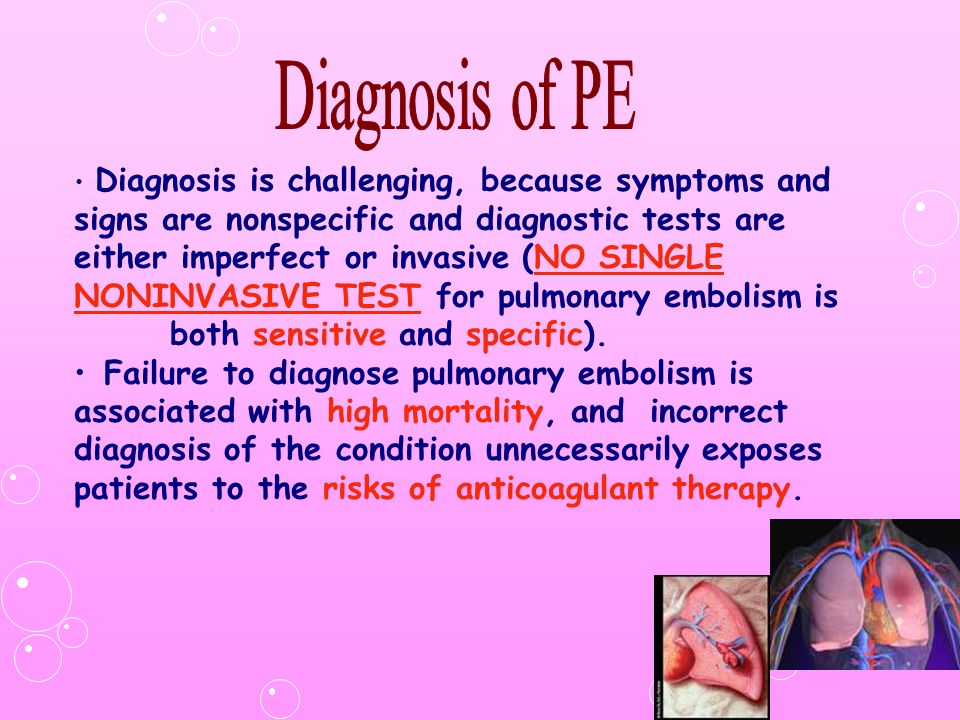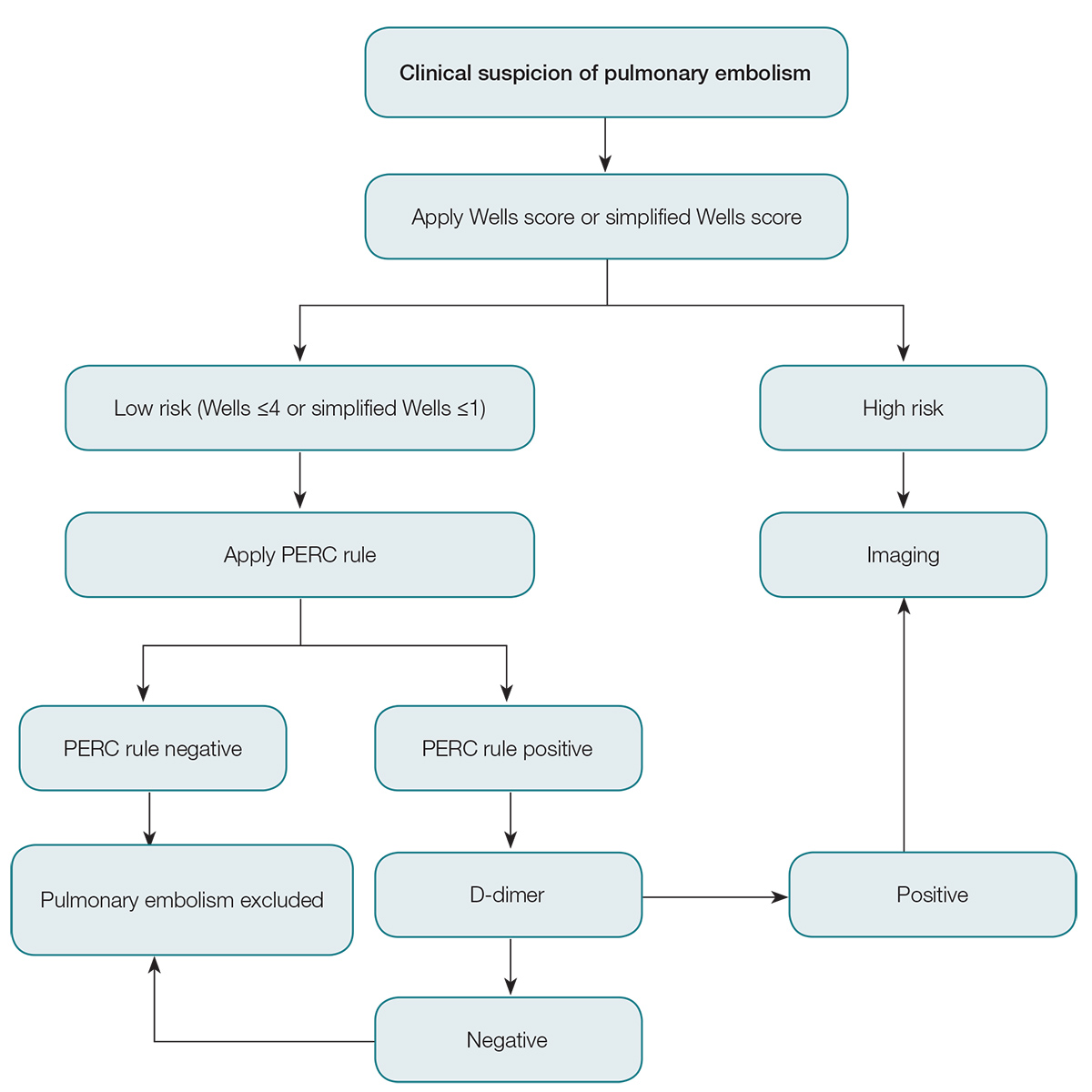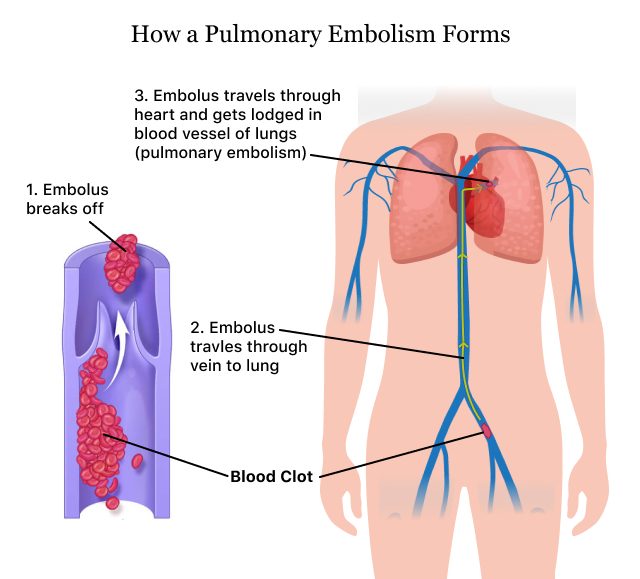Brilliant Strategies Of Info About How To Detect Pulmonary Embolism

Ct (computed tomography) scan or ct angiogram.
How to detect pulmonary embolism. The diagnosis of pulmonary embolism (pe) is nowadays based on the sequential use of several diagnostic tests rather than on a single test. Treatment should be commenced on clinical. Electrocardiogram (ecg) is one part of the complex process of diagnosing pulmonary embolism.
Your doctor will likely start with a physical exam. They’ll look closely at your legs to see if they’re. A computerised tomography pulmonary angiography.
It helps in getting an image of the arteries and veins of the lungs. These diagnostic strategies are safe and have. A dvt is a blood clot which can travel to the lungs and lead to a pe.
We review what your ecg can tell you about your condition. Ct pulmonary angiography (ctpa) will show filling defects within the pulmonary vasculature with acute pulmonary emboli. For patients suspected of having a pulmonary embolism, a leg ct scan in addition to a chest ct angiogram can more accurately detect or rule out pulmonary embolism.
A computed tomography angiogram of the chest was performed, which demonstrated multiple, bilateral pulmonary emboli (pe). If you think you have a pulmonary embolism (pe), you should get medical help right away. Table 3 summarizes the estimated effective dose of radiation in.
The electrocardiogram has an important role ruling. Your doctor will discuss your symptoms and test results with the duty senior clinicians, and you may have one of the following tests: Ct scans are more than 90% accurate in detecting pulmonary embolism and are considered the test of choice if imaging is required for diagnosis.
/symptoms-of-pulmonary-embolus-4163779_final-3a9c69d8313f48ccb5bd880da18ca168.jpg)
/pulmonary_embolus_diagnosis-5ae1f47730371300367cdceb.png)
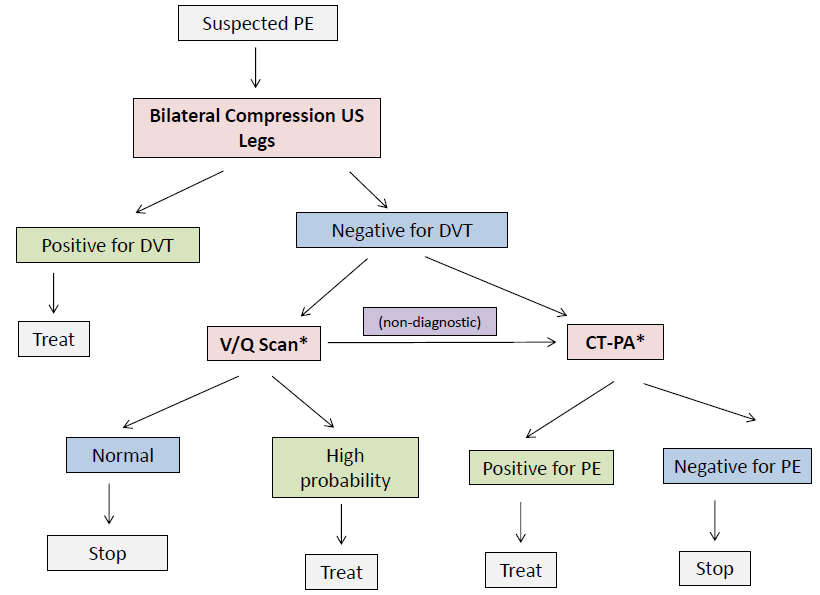


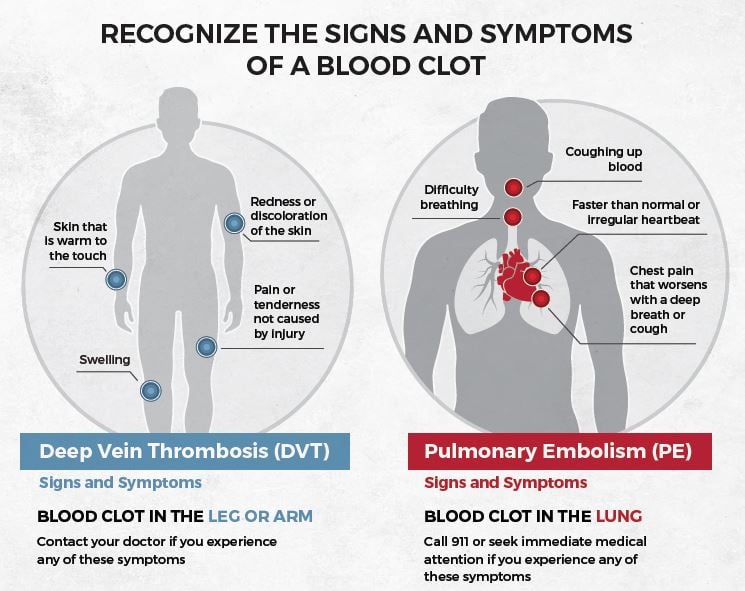

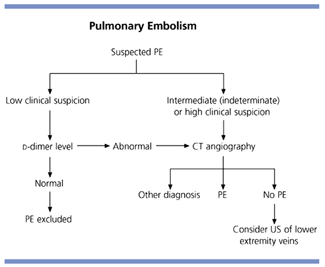
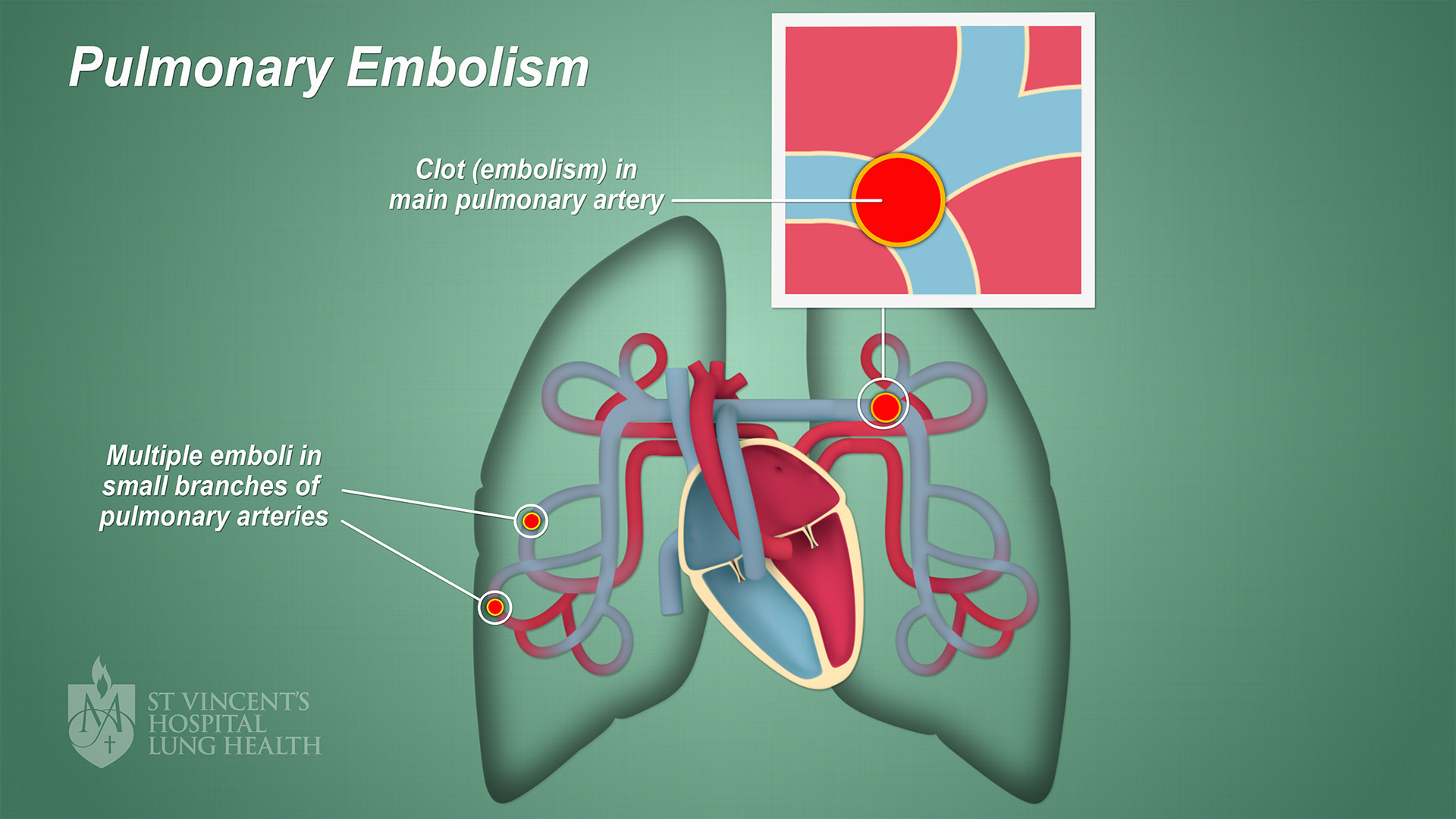
/blood-clot-diagnosis-5ae0b9a43418c60036298227.png)

